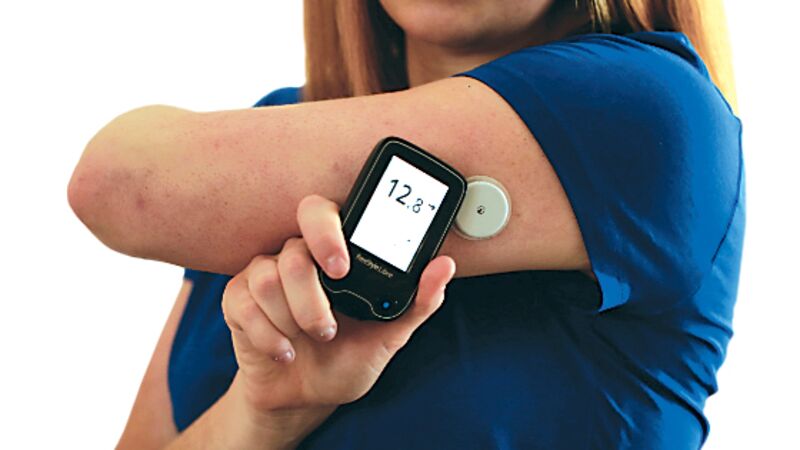


If you think you are having a hypo or are at risk of a hypo.Most people will want to scan more often anyway, but at least 8 times a day is recommended (including pre-meal, 2 hours post-meal, pre-bed, exercise) For a complete picture of blood glucose levels, the sensor should be scanned at least once every 8 hours.You can set reminders, alerts and add notes.Range of reports to allow you to look at your data and help make decisions about how you manage your diabetes.Latest 8 hours of continuous glucose data.Trend arrows showing if glucose levels are going up or down.Please check with your local health board for the qualifying criteria in your area. Satisfy their clinical team that they (or their carer) have the required knowledge/skills to self-manage diabetes for example, having attended a recognised diabetes structured education programme.Agree to scan glucose levels no fewer than six times per day.In most areas, the use is restricted but not limited to those who: In addition to the above, health boards across Scotland have mixed criteria for people to qualify for a Freestyle Libre. It is recommended that flash glucose monitoring with Freestyle Libre is available for individuals with diabetes who are actively engaged in the management of their diabetes and who intensively manage their condition with multiple daily insulin injections or insulin pump therapy. The handset can capture data from the sensor when it is within 1 cm to 4 cm of the sensor.Libre should not be used above 10,000 feet.

The sensor is water-resistant in up to 1 metre (3 feet) of water for a max of 30 minutes.Glucose readings on ISF have been proven to reliably reflect glucose levels. There is a delay of about 2.1 minutes for children and about 2.4 minutes for adults in ISF glucose response to changes in blood glucose. That's because sensor glucose readings come from the interstitial fluid (ISF), a thin layer of fluid that surrounds the cells of the tissues below your skin, not from your blood. Unlike current blood glucose metres, the FreeStyle Libre sensor measures the glucose in the body's interstitial fluid (ISF).įinger prick blood glucose readings and sensor glucose readings won't always match and in fact, are likely to be different. The difference between blood glucose and sensor glucose As long as the sensor is scanned reasonably frequently, it automatically measures and continuously stores glucose readings day and night. You scan the sensor using a handset or mobile phone. Instead, a small sensor sits on your upper arm. What does the FreeStyle Libre tell you?įlash Glucose Monitoring (FGM) enables you to test your glucose levels without routinely pricking your finger.There is also a template for use by a specialist when informing primary care prescribers that an individual has been switched to Freestyle Libre 2.īackground information is provided to support primary care prescribers in switching existing Freestyle Libre users to Freestyle Libre 2.Web Resource Last Updated: 27-04-2022 Contents: These templates should be used by Pan Mersey organisations for incorporation into their specialist diabetes service clinic documentation that informs primary care prescriber that Freestyle Libre prescribing has been initiated in an individual patient according to the agreed criteria in the Pan Mersey statement, when confirming to primary care prescriber whether the patient has met continuation criteria after review, and into patient information/ contract documentation given to each patient on commencement of prescribing. The Pan Mersey Area Prescribing Committee recommends the prescribing on the NHS of flash glucose monitor sensors (FreeStyle Libre®) only within the criteria outlined.


 0 kommentar(er)
0 kommentar(er)
